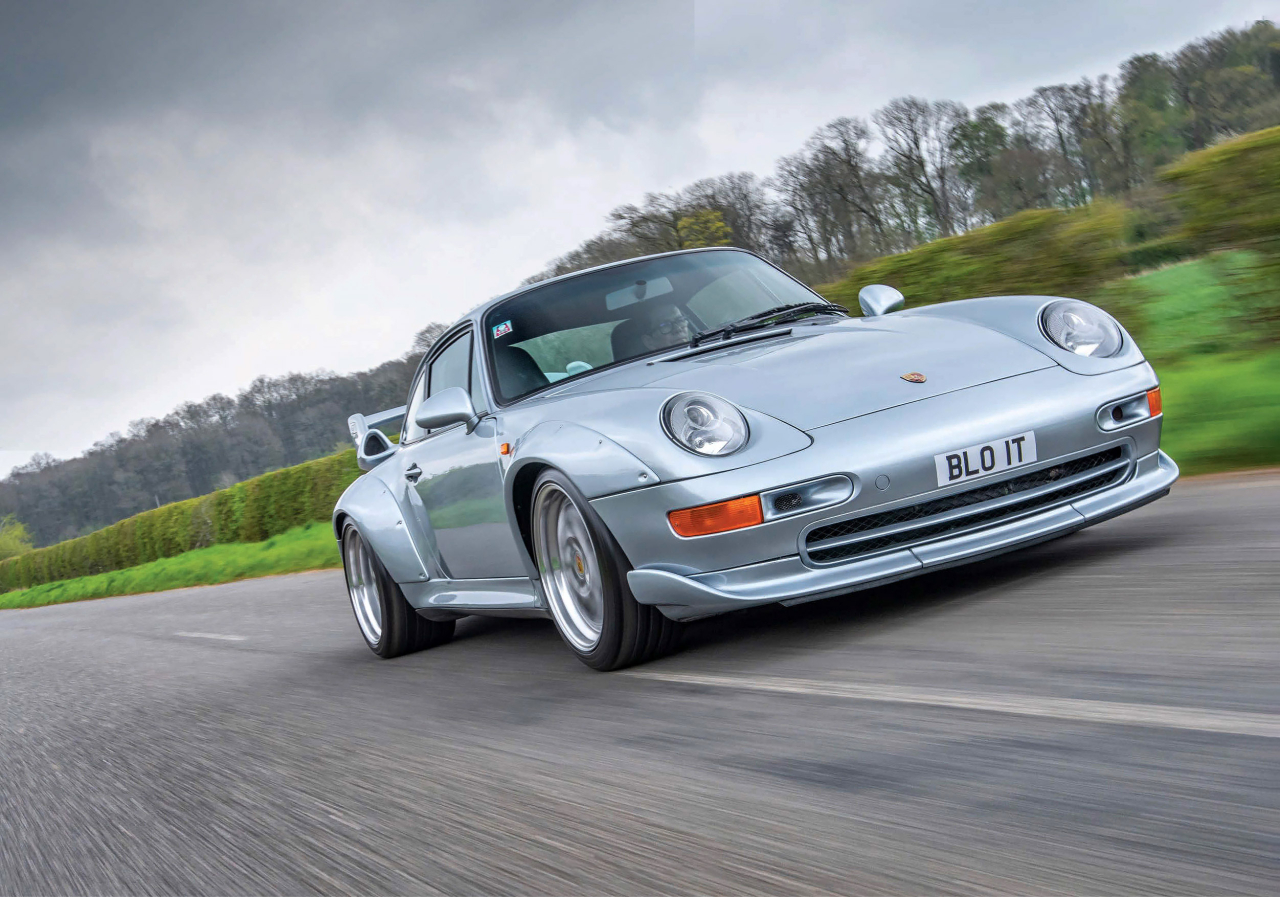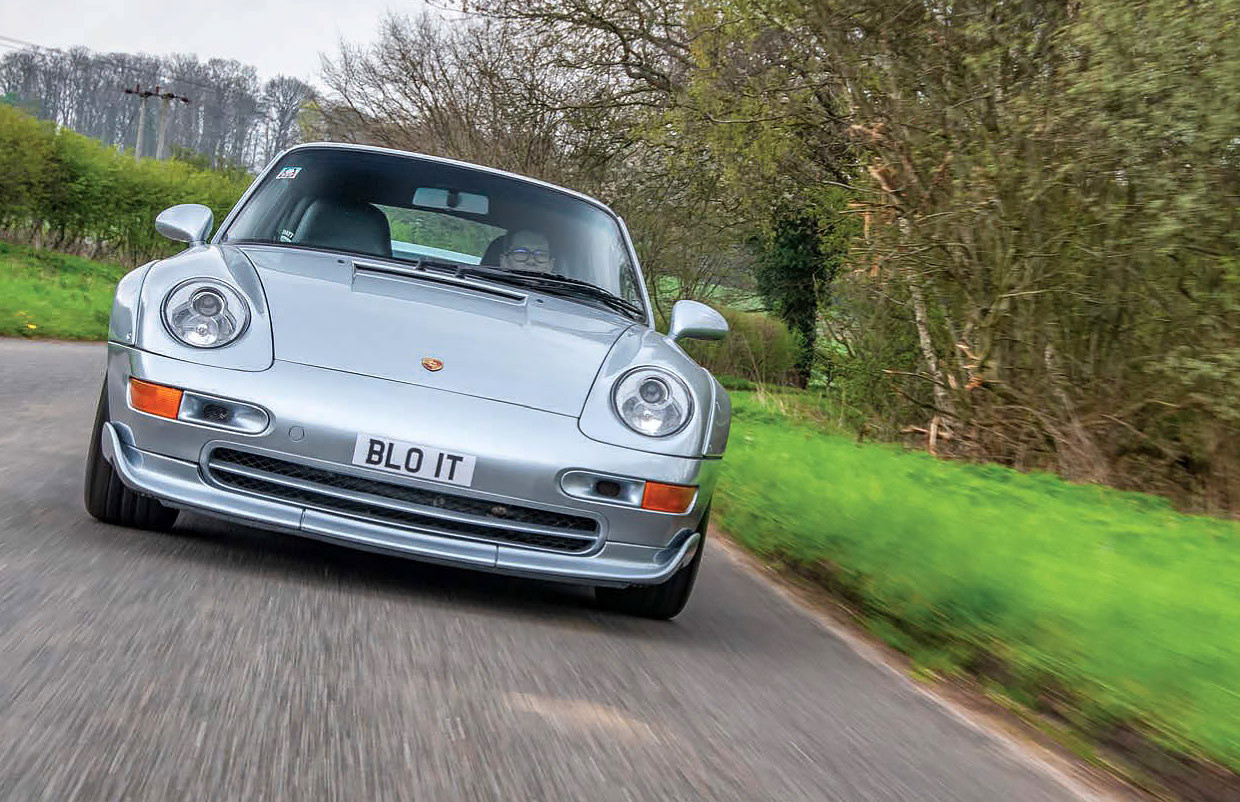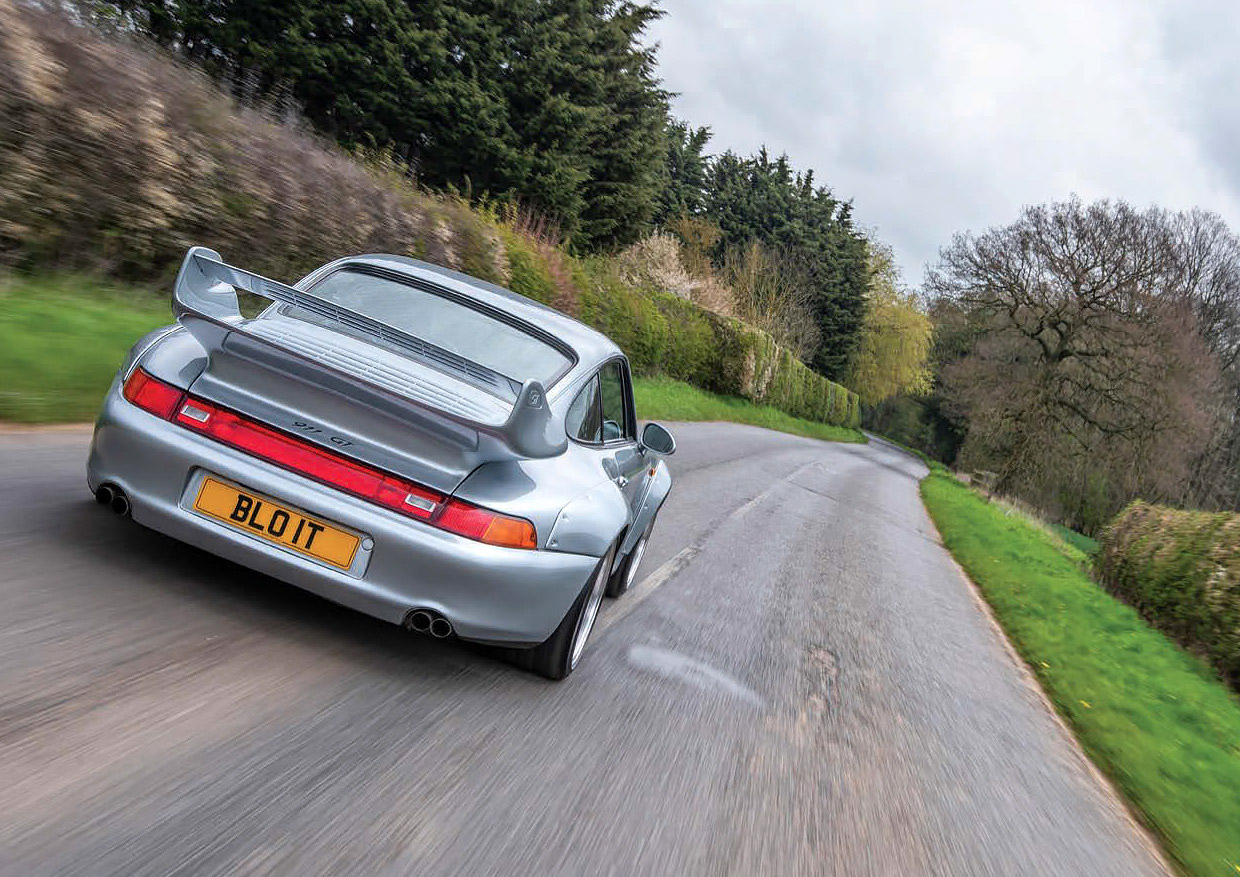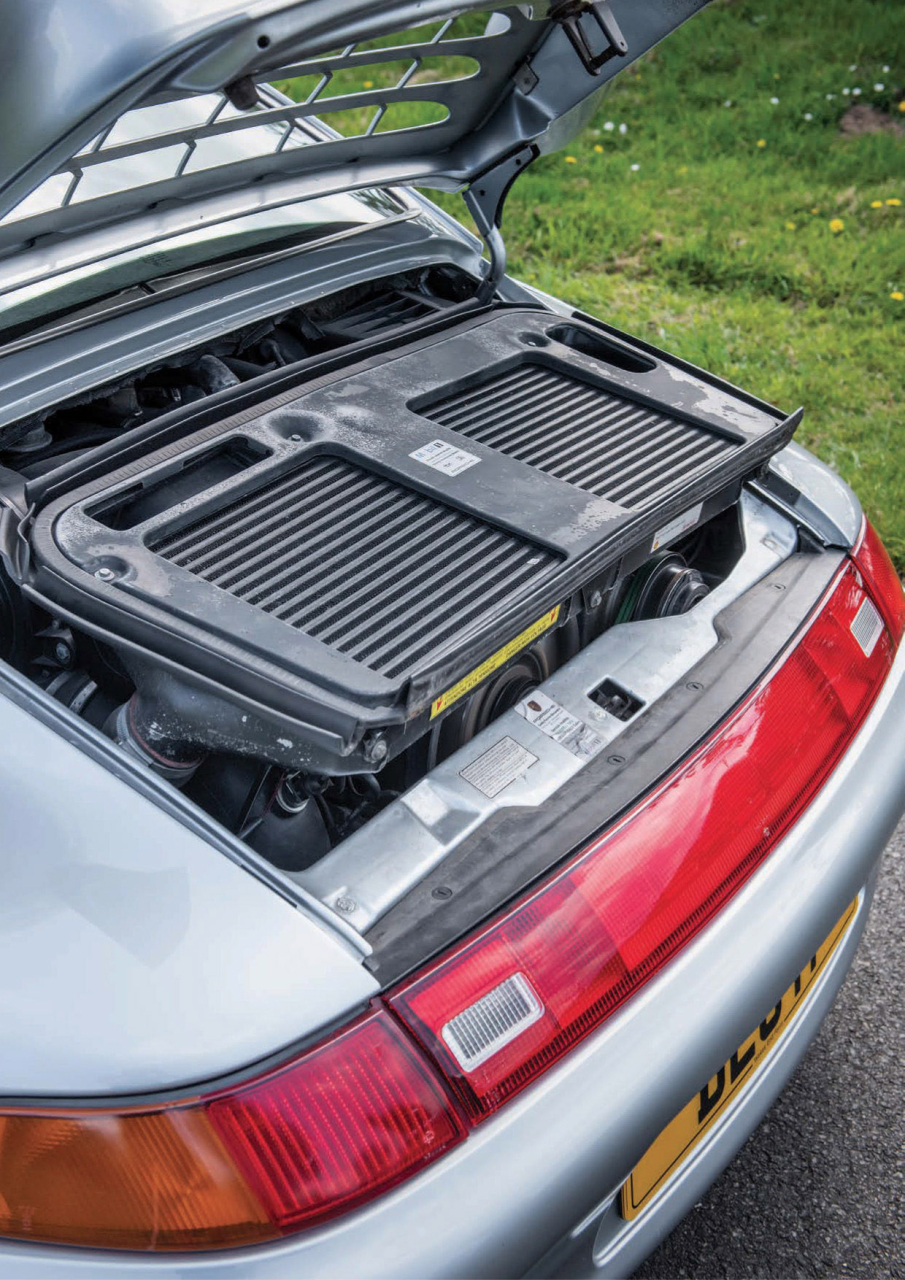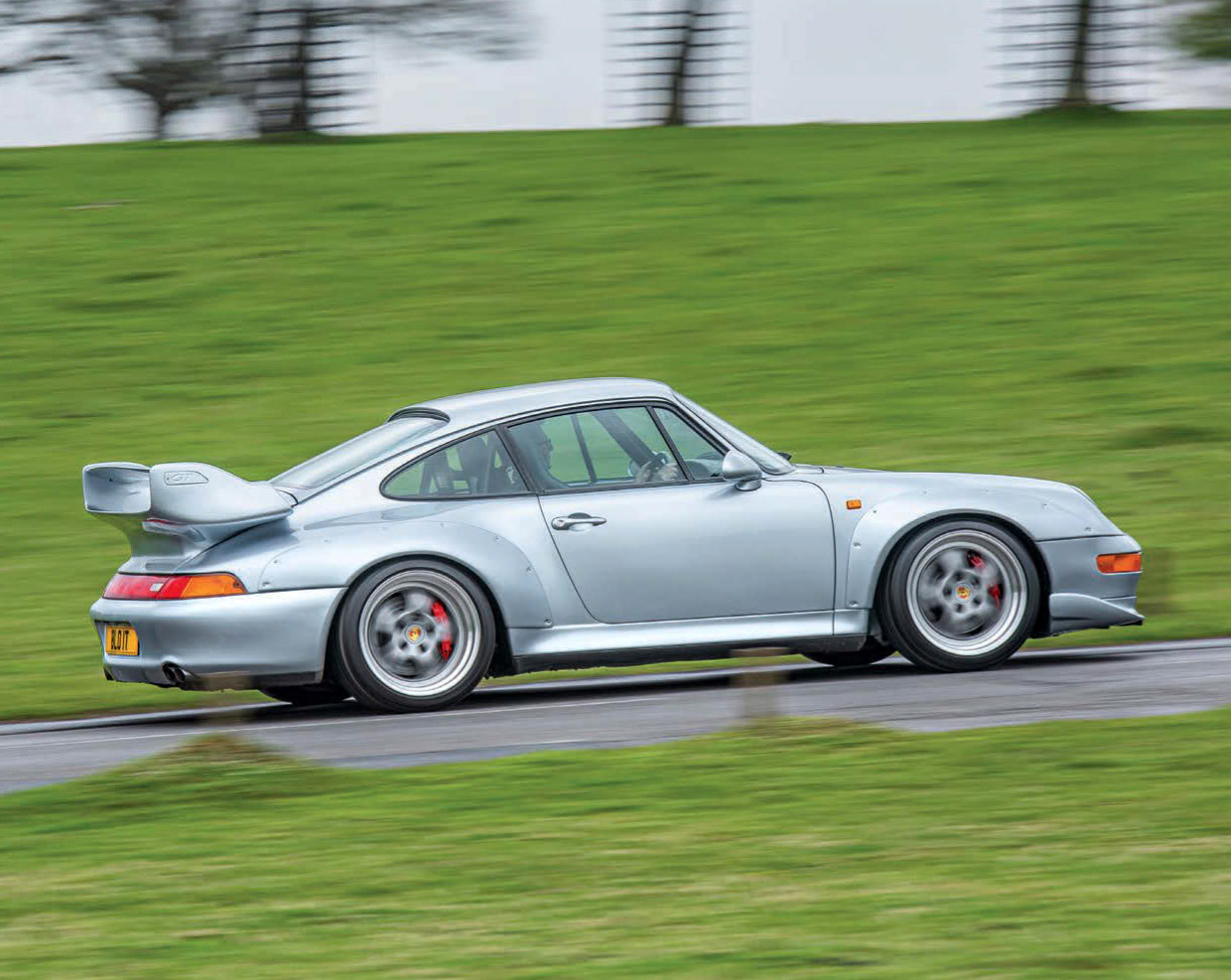Bonus pages
Joomla pages

 OCTANE
Cars and Moto
OCTANE
Cars and Moto
Pinned Items
Recent Activities
-
Post is under moderationStream item published successfully. Item will now be visible on your stream.
-
Artemas DRIVE reacted to this post about 1 year agoOPPOSITES ATTRACT
#Porsche releasing a variant of 911 as if designed to your personal specification, only for you to discover the car is subject to limited-volume production and all purchase slots are taken. In the current climate, with allocations on the manufacturer’s GT order books exchanging hands for big money, this isn’t too difficult to comprehend. And so it was in the mid-1990s, when the 993 GT2 (badged simply as 911 GT) was released to enable Porsche to go racing in the FIA’s GT2 class.
Most prospective purchasers with their nose out of joint would be inclined to move along to the next best thing, but not the owner of the 993 you see pictured on this page. Recognising he was late to the GT2 party, but reasoning the model was based on the 993 Turbo, he bought a standard Turbo and then handed it to the Porsche factory in his native Italy, where the car underwent conversion to GT2 specification. Of the 194 993 GT2s assembled, you can consider this the 195th of its kind. In many respects, the 993 GT2 represents the ultimate evolution of Porsche’s in-house development of the air-cooled flat-six.
Even today, the unit’s performance figures are impressive — 424bhp pitches output only twenty ponies shy of the current 911 Carrera GTS, while a 3.9-second sprint from rest to 60mph makes the 993 GT2 just as quick as a new GT3. This is nothing short of amazing for a factory-configured air-cooled 911 fast approaching its thirtieth anniversary. If the 993 GT2 is the flag bearer for aircooled Porsche performance, this issue’s unrestored 356 A coupe sits at the opposite end of the spectrum. Don’t get me wrong, the breathed-on flat-four powering our cover car benefits from a welcome lift courtesy of a Barry Curtis rebuild, but we’re still talking about a Porsche with only twenty percent of the GT2’s firepower. Does this make the 356 any less impressive? Absolutely not. Does relatively low engine output in any way spoil the driving experience? Nope. That’s the thing about classic Porsches — they come in all flavours. Each of them is utterly brilliant.
Post is under moderationStream item published successfully. Item will now be visible on your stream. -
Artemas DRIVE commented on this post about 1 year agoDespite rolling out of the factory as an already impressive #Porsche , this silver stunner was immediately transported to Porsche’s headquarters in Italy and treated to an exacting GT2 makeover at the instruction of a wealthy industrialist. We take to the wheel...
Words Steve Bennett
Photography Dan Sherwood
THE LAST ACTION HERO 993 GT2 CONVERSION
A 993 Turbo converted to GT2 specification / #Porsche-911 Porsche / Porsche-911-993 / Porsche-911-GT2 / Porsche / Porsche-911-GT2-993 / Porsche-911-Turbo
Whatever happened to all the heroes? When English rock band, The Stranglers, were singing this line, the band wasn’t getting all shouty at the demise of the motorsport homologation process responsible for turning race cars into road cars (or vice versa). Perhaps they should have been? This process created some of the best-loved 1960s, 1970s, 1980s and even 1990s street machines. Want to go racing or rallying in a car from the production line? No problem, but if you want to make your four-wheeler of choice rather more than the sum of its standard parts, then it’s homologation time.
The rules and regulations governing different championships — whether race or rally — would often require a specific number of participating cars to be available as showroom offerings to you and I, Joe Public. The result? Truly special sports cars. Think of Group B rallying/racing of the 1980s for the ultimate expression of homologation.
Mundane isn’t a word applying to Porsche products. The manufacturer’s sporting ambitions are high up the scale, but rules are rules — it’s fair to say most of Porsche’s road racers came about as a consequence of motorsport homologation. Without it, the world would be devoid of the Carrera RS 2.7 and its iconic ducktail. Homologation was, of course, the gift that kept on giving. Manufacturers were obliged to keep building street-legal evolutions of their competition cars if they wanted to continue racing. Hence, the Carrera RS 2.7 became the Carrera RSR 2.8, which became the Carrera RSR 3.0. And so it went on. The 924 Carrera GT and GTS? Homologation models. The 959? Homologation. Even the 911 GT1 had to be made in road-legal form, a massive headache for Porsche, but a fantastic plaything for those who could afford to buy a Straßenversion.
The last of the great Porsche homologation specials? Arguably, it’s the 993 GT2, complete with its bolt-on wheel arches. That’s the other thing about homologation: the means to the end isn’t always aesthetically pleasing. For racing, function trumps form, after all. Cost is also a concern, but we’ll come to that.
The GT2’s purpose in life? To go racing, obviously. In this instance, high-speed action concerned the 1994 BPR Global GT Series. The competition was the brainchild of Porsche royalty, Jürgen Barth, Patrick Peter and Stephane Ratel. The name? The Global GT Series bit is self-explanatory, while BPR is merely the first letter of each of the trio’s surnames. The idea was to re-invigorate international sports car racing after the implosion of the World Sportscar Championship in 1992. New rules were designed to encourage participation of a high number of production-based sports cars, the kind of silhouettes fans could connect with, rather than the oft-alien-like prototypes dominating the era’s sports car racing. Naturally, Porsche was keen to get involved, as were McLaren and Ferrari, who pitched in with the F1 GTR and F40 GTE respectively. The series also enabled Jaguar to find a purpose for the XJ220. Even Callaway and Lotus came out to play, the latter with a fast (but fragile) Esprit.
Four classes were created, from GT1 to GT4, although the class structure was slimmed down to just GT1 and GT2 in 1996. Our 993 homologation hero obviously slotted neatly into GT2. The new rulebook worked a treat. Fans loved the GT road car vibe, as did the FIA, which took control of the competition’s reins in 1997 and sanctioned the official FIA GT Championship, elements of which still exist today.
In developing the 993 GT2, Porsche clearly decided to ‘go big or go home’. If you’re a bear, then be a grizzly bear — the 993 Turbo was chosen as the starting point for the Stuttgart squad’s GT2 class racer. The Turbo wasn’t necessarily the most obvious choice of Porsche, what with its weighty four-wheel drive equipment and GT pretensions (in the true sense of the meaning), but a turbocharger equates to increased power. Two turbos equals even more. As much power as the crank will handle, in fact. Also, four-wheel drive can be binned, as can lots of other stuff.
BALANCE THE SCALES
Proving the point, Porsche ditched 250kg from the weight of the standard 993 Turbo. Aluminium was used for the GT2’s doors and bonnet, while thinner glass and minimal sound-deadening shaved off further bulk. Door handles? Who needs them?! Back seats? Likewise. Electric windows, central locking, sunroof, air bags. All of them were gone. Turbo body not wide enough to accommodate massive eighteens boasting nine inches of width at the front and eleven at the rear? No problem — just get the plasma cutter out and attack the wings, then bolt on fibreglass arch extensions, thus creating the 993 GT2’s defining, brutal feature and a 911 rear end only surpassed in width by the arrival of the 991 911 Turbo many years later. RAUH-Welt Begriff might get the headlines, but Porsche did a wide-arched 911 first.
Whereas every aspect of the 991 Turbo’s body is in proportion, designed from the outset to be wild and wide, the 993 GT2 looks as though it has been the recipient of a targeted Botox injection. Damning as all this sounds, it damn well works, does it not? Add the mad, scoopy rear wing and the curvy front splitter, plus those Speedline split rims (with polished lips and grey magnesium centres), and it’s clear the 993 GT2 remains, to this day, the hardest of Porsche’s hardcore road racers.
Let’s rewind a tad. We namechecked fibreglass, didn’t we? Nowt fancy, such as carbon-fibre, which was as much a thing in motorsport during the mid-1990s as it is now (albeit previously viewed as a rather more exotic material). Why no lightweight weave? Pragmatic Porsche reasoned replacement, bolt-on, fibreglass wings would be a good deal easier and cheaper to replace than carbon-fibre in the rough and tumble of a four-hour endurance race or, indeed, a day and night at Le Mans.
In 1994, and in standard trim, the near 400bhp 993 Turbo was already one of the world’s fastest production cars. For the GT2, Porsche pretty much left the engine alone, winding the boost up to produce 430bhp and homologating an oil cooler and larger intercooler, fed by the substance-overstyle rear wing, which featured integrated scoops. With kerb weight tipping scales at 1,295kg, the power was plenty. It still is, for that matter.
In racing trim, the 993 GT2 wasn’t quite on terms with the McLaren F1, but it was very much a star pupil in the class of GT2, which was the aim, and Porsche couldn’t build ‘em quick enough, not only for the track, but also for the road. In all, 194 examples were assembled. Our star is car is number 195. Come again?
It’s time to ‘fess up. What you’re looking at is a replica of sorts, but to describe it as such is really to do this silver stunner a massive disservice. There are many Porschephiles who really do consider this 911 to be the 195th 993 GT2 — every nut, every bolt, every last detail makes this car a dead ringer for a GT2, so much so it has eluded the scrutiny of many marque experts and even representatives from Porsche Cars Great Britain.
The car belongs to Kevin Kivlochan, a renowned historic motorsport driver and a regular at Goodwood and the Le Mans Classic. He prefers venomous AC Cobras and thunderous Ford Galaxies for the track, but sticks to Porsches for the road — among his collection resides one of the most original early Carrera RS 2.7s, a prototype 964 N/GT and a first-generation 997 GT3 RS. He’s clearly a man of some discernment and not the sort of fellow to countenance a mere lookalike.
As already mentioned, Porsche based the 993 GT2 on the 993 Turbo, and that’s just how this build started life. It left the factory in 1996 at the behest of a wealthy Italian industrialist and was promptly delivered to Porsche Italia, where its conversion to GT2 specification was carried out to an exacting standard at a cost of twelve million lira. Kevin has the reams of paperwork to prove it. If only it was written in English.
With a real-deal 993 GT2 now priced at such a level using one is only for the brave, Kevin can afford to be less precious with his GT2-aping Turbo. In fact, he uses all his cars, especially his Porsches, whenever he’s able to do so. “My 993 is quite happy trundling along to Waitrose,” he says. This isn’t quite what we had in mind, but he’s throwing me the keys and, to be perfectly honest, the fact he isn’t encouraging us to take to the road in a genuine GT2 comes as something of a relief.
This is a first. There’s not many Porsches I haven’t driven during thirty-five years at the coal face of messing about with cars, but the 993 GT2 has eluded me. To my mind, a car avoiding engaging me in seat time must be something of an animal, despite what Kevin might say. Well, you know, just look at it. Even in Polar Silver, this 911 is about as subtle as a smack in the face. It’s those bolt-on arches. And the roll cage. And the 430bhp. And those monster wheels. And, and, and. You get the drift.
ON THE RIGHT TRACK
You can probably see where this is heading. Kevin’s car isn’t a pussy cat, but nor is it the wild animal I was expecting. Should I be surprised? Perhaps not — the 993 Turbo lives up to ‘everyday supercar’ superlatives and Porsche has always put drivability at the forefront. Why make life hard, particularly in an endurance race or at three in the morning at Circuit de la Sarthe, sixty minutes into a multi-hour stretch?
The great thing about jumping into a 911 of this age is the fact everything is familiar, even in a leftie. Factor in the visibility, the spot-on driving position and a supercomfy leather-lined Recaro fixed bucket, and there’s little to be intimidated by. Start-up procedure is just a twist of the key. The turbochargers mute the sound a little, but there’s solid chunter and a reassuring clatter from the lightweight flywheel, the noise disappearing when the clutch is engaged. The clutch itself is light, much the same as it is in a standard 993 Turbo. The gearchange is a delight — totally effortless and yet capable of moving with military precision.
Let’s not get too complacent here. User-friendly and drivable this 993 might well be, but it’s still got a massive poke of forced induction at the rear and the only form of traction control comes from the right foot. Sure, you can cruise along on a light breeze — ideal when doing the shopping or taking your wife to a family wedding in Somerset, as Kevin did recently — but start to work the engine a little harder and the car’s claws start to show.
It takes a little while and a little bravery to get fully immersed in the 993 GT2 experience. The suspension is as solid as you’d expect from a race car. The peculiar-to-911 weight distribution ramps up the effect, magnifying lumps and bumps and calling for commitment. The steering wriggles. It demands a firm hand and confidence, but rewards with a front end that turns in beautifully, helped by that weighty rear in true, traditional 911 style.
It’s easy to assume there is massive grip from the 285/35 Michelins at the back, but the thought of them letting go is sobering. There’s no doubting they would, if provoked (probably not too severely).
For all its shopping and going-to-a-wedding chumminess, the twin-turbocharged 3.6-litre flat-six is seriously potent, with a spike in power delivery giving way to a surge of torque as wide as it is seemingly long.
There’s no need for sprintier gear ratios — all that torque makes light work of the 993 Turbo’s six cogs. Unlike modern GT Porsches, you can approach the limits of this 911 on the road, but only just and, for me, only fleetingly. Put it this way, we went to the edge, had a little look over and decided to come straight back again. Gathering momentum and no small amount of commitment, there is a point where the front end grip transfers weight to the rear and you start to feel the back end edge wide. That’ll be the law of 911 physics, then. No room for heroics on this occasion. What would The Stranglers say?
That’s enough for me. Besides, Kevin probably needs to go shopping. It’s been an experience and a privilege to drive 993 GT2 number 195 of 194. This twin-turbocharged air-cooled 911 is a pussy cat when it wants to be, but takes no prisoners when riled up. They sure don’t build ‘em like they used to.
THE FRONT END GRIP TRANSFERS WEIGHT TO THE REAR AND YOU START TO FEEL THE BACK END EDGE WIDE
Above Like what you see? This ultimate factory-spec 993 is now being offered for sale, meaning it could very well be parked in your garage.
Above Subtle grey paint applied to each split rim’s magnesium centre. Right Distinctive rear wing features intakes to feed the large intercooler (facing page).
Below Look over your shoulder and you’ll see a roll bar and rear seat delete, as well as custom carpet making the car’s identity known.
PORSCHE BASED THE 993 GT2 ON THE 993 TURBO, AND THAT’S JUST HOW THIS BUILD STARTED LIFE
Above Twin turbochargers force the 3.6-litre flat-six to develop big power, which can be exploited on the road, providing the driver keeps their wits about them. Above and below Hard-shell buckets are comfortable enough for the weekly shop, but don’t expect to fit many bags of groceries in the trunk.
Above The 993 GT2 was based on the same-generation 911 Turbo, though this particular example left Stuttgart in Turbo trim and was delivered to Porsche Italia, where it underwent a conversion to GT2 spec.
PORSCHE WAS KEEN TO GET INVOLVED, AS WERE MCLAREN AND FERRARI, WHO PITCHED IN WITH THE F1 AND F40 RESPECTIVELY
Post is under moderationStream item published successfully. Item will now be visible on your stream. -
Stream item published successfully. Item will now be visible on your stream.
-
Stream item published successfully. Item will now be visible on your stream.
There are no activities here yet
